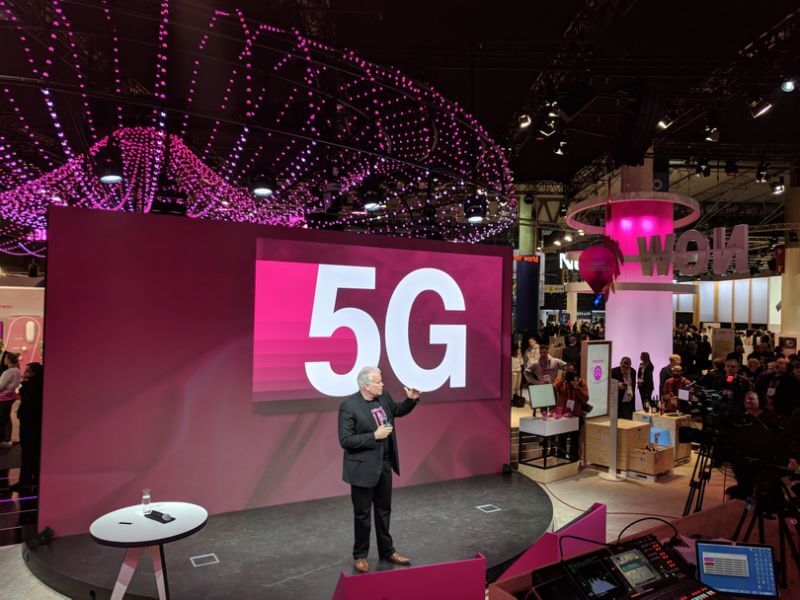
BARCELONA — 5G wireless is coming faster than you might think. But as the advent of this next generation of over-the-air broadband draws near, the hype surrounding it is starting to ebb.
Last year, a typical quote about 5G might have sounded like the declaration that Meredith Attwell Baker, president of the wireless trade group CTIA, made at a conference in September: “5G will make every industry and every part of our lives better.”
And now? The rhetoric is a bit more subdued. “5G is going to be an incremental upgrade,” T-Mobile (TMUS) chief technical officer Neville Ray said at a press conference Tuesday night at Mobile World Congress 2018.
Yes, 5G will eventually bring much faster downloads and much lower latency — but it’s not going to replace 4G the way 4G wiped 3G off the map. And it won’t come to smartphones until after it reaches other, larger devices.
Not just vaporware
Signs of 5G’s progress from marketing visions and bulky testing gear to deployment schedules and early versions of consumer hardware were all over the floor here at MWC.

Qualcomm (QCOM), for instance, showed off prototypes of the X50 5G chipset it will make for 5G smartphones that will ship next year. A model running a network-bandwidth test showed download speeds hovering at around 4 gigabits per second, about 100 times faster than 4G LTE.
And all four national U.S. carriers are advertising 5G availability timetables.
Verizon (VZ) looks to be first. In November, the carrier announced it will launch “fixed wireless” residential 5G in Sacramento, Calif., in the second half of this year, with two to four other cities following. In an interview Tuesday, chief network engineering officer Nicola Palmer reiterated that schedule and said a mobile 5G service “will quickly follow.”
AT&T (T) released its own 5G timeline last week, touting plans to deliver “mobile 5G” to a dozen cities (with only Georgia, Dallas and Waco, Tex., named) by the end of 2018. What that press release didn’t spell out: This access will initially be confined to mobile hotspots, because no 5G smartphones will ship until 2019.
Sprint (S) said Tuesday that it will launch mobile 5G service “in the first half of 2019,” while customers in Atlanta, Chicago, Dallas, Houston, Los Angeles and Washington will get “5G-like” service this year as it upgrades its network to prepare for 5G.
Later Tuesday, T-Mobile announced that it will build 5G networks in 30 cities, with smartphone service due next year in Dallas, Los Angeles, New York, and Las Vegas.

“5G is happening fast — even faster than we or anyone else expected,” Nokia CEO Rajeev Suri summed up at a press conference Sunday.
Different flavors of 5G
Beyond the residential, hotspot and smartphone 5G services we’ll see, it’s also important to remember that 5G will come over three main sets of frequencies with their own trade-offs.
The fastest 5G, like what that Qualcomm chipset showed off, will come via millimeter-wave frequencies at 24 GHz and above — far higher than today’s LTE bands. The tradeoff there: They won’t cover as much distance. It’s similar to how a 5-GHz Wi-Fi signal won’t reach as far as across your house as a 2.4-GHz network.
Millimeter-wave 5G will require building out many new cell sites, each with their own power and “backhaul” broadband link to the rest of the Internet. But carriers voiced cautious optimism that they won’t need quite as many of them as once feared.
At a lunch briefing Tuesday, Gordon Mansfield, an AT&T vice president, noted that “beam forming” — electronically steering a signal — is allowing the carrier to cover more ground from the millimeter-wave stations that will serve up its initial 5G service.
Verizon’s Palmer said the carrier is seeing ranges of about 2,000 feet, “which is on the high end of what we thought.” Then again, its initial fixed-wireless deployment will require professional installers to visit a customer’s home to position the antenna properly.

Sprint and T-Mobile, meanwhile, will light up 5G on lower-frequency bands — 2.5 GHz for Sprint, 600 MHz for T-Mobile — that should cover more ground but provide lower speeds.
At Tuesday’s event, T-Mobile’s Ray observed that millimeter-wave service will never be able to cover all the non-urban expanses of the U.S. LTE will persist there and then be complemented by 5G over lower frequencies.
More work to do
While carriers don’t agree on how to bring 5G to the market, they do agree that they could use more airwaves to deliver it. As Ray said Tuesday: “The U.S. industry needs more spectrum.”
At a panel discussion Monday evening, Sprint CEO Marcelo Claure complained about the time and expense of adding small cell sites, saying that threatened 5G’s advance: “I’m afraid that the U.S. is gonna be late.”
Another speaker on that panel, Federal Communications Commission chairman Ajit Pai, said the FCC was moving to remove regulations that impede wireless infrastructure and was readying an auction of 5G-friendly 24 and 28 GHz spectrum — but that Congress needed to pass enabling legislation by May for this auction to happen in November.
Saying “we aspire to lead the world in 5G,” Pai also defended his repeal of net-neutrality rules as essential to 5G’s fortunes.
The audience sat silent, reserving its applause for another panelist who disagreed with Pai. European Union digital-single-market commissioner Andrus Ansip said the EU would stick to its net-neutrality rules even as 5G arrives: “Internet providers must treat all traffic equally; no blocking, throttling or discrimination.”
(Disclosure: Verizon is the parent company of Yahoo Finance.)
More from Rob:
Email Rob at rob@robpegoraro.com; follow him on Twitter at @robpegoraro.
Follow Yahoo Finance on Facebook, Twitter, Instagram, and LinkedIn
Website: LINK
Schreibe einen Kommentar
Du musst angemeldet sein, um einen Kommentar abzugeben.